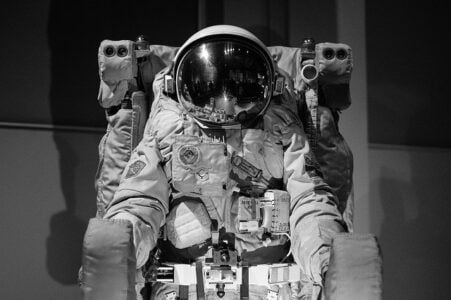NASA delays human mission to moon
Context:
NASA has postponed its moon mission to 2025. This will be the first moon mission after 1972 Apollo Lunar mission.
Background
The Artemis mission had intended to send the first man and woman to moon by the year 2024.
Details
The delay has taken place after a judgment issued by a federal court in favour of Blue Origin regarding awarding of $2.9 billion contract to SpaceX by NASA.
The lawsuit
- NASA had selected 10 companies including Blue Origin in 2018 for developing technologies to use space-based resources for missions to the Moon and Mars.
- The $2.9 billion contract was awarded to SpaceX for building a lunar lander to transport astronauts to the Moon.
- Blue Origin has filed a case alleging that NASA was “unlawful and improper” in its evaluation of the proposals.
Other reasons for delay
- The delay could be due to the first-time development challenges and the lawsuit that was filed by Blue Origin.
- The congress also did not provide enough funds for other competitors working with NASA under the Human Landing System (HLS).
The Artemis program:
- With the Artemis program, NASA wishes to demonstrate new technologies, capabilities and business approaches that will ultimately be needed for the future exploration of Mars.
- It stands for Acceleration, Reconnection, Turbulence, and Electrodynamics of the Moon’s Interaction with the Sun.
- The program is divided into three parts:
- Artemis I is most likely to be launched 2021 and involves an uncrewed flight to test the Space Launch System (SLS) and Orion spacecraft.
- Artemis II will be the first crewed flight test and is targeted for 2023.
- Artemis III will land astronauts on the Moon’s South Pole in 2024.
Systems Developed:
- For NASA, going to the moon involves various elements such as:
- The exploration ground systems (the structures on the ground that are required to support the launch),
- The Space Launch System (SLS) and Orion (the spacecraft for lunar missions).
- NASA’s new rocket called SLS will send astronauts aboard the Orion spacecraft.
- Gateway (the lunar outpost around the Moon),
- Lunar landers (modern human landing systems),
- Once the astronauts dock Orion at the Gateway — which is a small spaceship in orbit around the moon — they will be able to live and work around the Moon, and from the spaceship, will take expeditions to the surface of the Moon.
- The astronauts going for the Artemis program will wear newly designed spacesuits, called Exploration Extravehicular Mobility Unit, or xEMU.
- These spacesuits feature advanced mobility and communications and interchangeable parts that can be configured for spacewalks in microgravity or on a planetary surface.
NASA and the Moon
- The US began trying to put people in space as early as 1961. Eight years later, on 20th July, 1969, Neil Armstrong along with Edwin “Buzz” Aldrin became the first human to step on the Moon as part of the Apollo 11 mission.
- Apart from the purpose of space exploration, NASA’s endeavour to send Americans to the Moon again is to demonstrate American leadership in space and to establish a strategic presence on the Moon, while expanding the US global economic impact.
Moon Exploration
- In 1959, the Soviet Union’s uncrewed Luna 1 and 2 became the first rover to visit the Moon.
- Before the USA sent the Apollo 11 mission to the Moon, it sent three classes of robotic missions between 1961 and 1968.
- After July 1969, 12 American astronauts walked on the surface of the Moon until 1972.
- In the 1990s, the USA resumed lunar exploration with robotic missions Clementine and Lunar Prospector.
- In 2009, it began a new series of robotic lunar missions with the launch of the Lunar Reconnaissance Orbiter (LRO) and the Lunar Crater Observation and Sensing Satellite (LCROSS).
- In 2011, NASA began the ARTEMIS.
- In 2012, the Gravity Recovery and Interior Laboratory (GRAIL) spacecraft studied the Moon’s gravity.
- Apart from the USA, the European Space Agency, Japan, China, and India have sent missions to explore the Moon. China landed two rovers on the surface, which includes the first-ever landing on the Moon’s far side in 2019.
ISRO’s Moon Exploration:
- Chandrayaan 1:
- The Chandrayaan project began in 2007 with an agreement between India’s space agency ISRO and Russia’s ROSCOSMOS for mutual cooperation.
- However, the mission was postponed in January 2013 and rescheduled to 2016 as Russia was unable to develop the lander on time.
- Findings: Confirmed presence of lunar water.
- Evidence of lunar caves formed by an ancient lunar lava flow.
- Past tectonic activity was found on the lunar surface.
- The faults and fractures discovered could be features of past interior tectonic activity coupled with meteorite impacts.
- Chandrayaan-2 is India’s second mission to the moon and comprises a fully indigenous Orbiter, Lander (Vikram) and Rover (Pragyan).
- The Rover Pragyan is housed inside Vikram lander.
- The Indian Space Research Organisation (ISRO) recently announced India’s third lunar mission Chandrayaan-3, which will comprise a lander and a rover.
Source: Indian Express
You can find many articles on SPACE and SCIENCE AND TECHNOLOGY (part of GS III) in our website. Go through these articles share with your friends and post your views in comment section.

